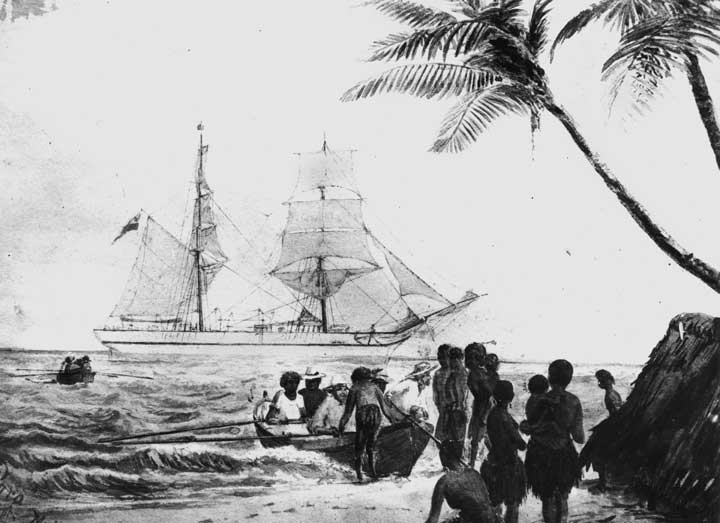 Pacific Island labourer recruiting ship 'Para', c1880
Pacific Island labourer recruiting ship 'Para', c1880
TLF ID R8178
This is a drawing of the two-masted brigantine 'Para', probably completed by Master Mariner William Wawn during a successful five months voyage to the Solomon Islands in 1894. One of a series of sketches of his impressions of the islands in pencil, ink and watercolour, it shows the recruiting ship offshore at anchor, as two rowing boats ply between it and a Pacific island carrying European crew and several Pacific Islanders. A group of ten or so Islanders, mostly women with young children, stand watching as one row boat pushes off.
